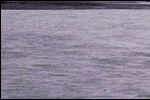|
Some statistical data on the animals found on the coastal plain:
http://biology.usgs.gov/s+t/frame/s113.htm#25074
A useful general map:
http://www.inforain.org/maparchive/arcticwildlife_refuge.htm
Books and others;
http://eces.org/ec/ecosystems/anwr.shtml
Climatic Atlas (v.3)
National Climatic Data Center
Ecosystem Health
Bioindicators and Biomarkers of Environmental Pollution and Risk Assessment
The Arctic Sea Ice Ecosystem Cumulative Environmental Effects of
Oil and Gas Activities on Alaska's North Slope
Board on Environmental Studies and
Toxicology (BEST), Polar Research Board (PRB) National Academy of
Sciences
Arctic
Refuge Coastal Plain Terrestrial Wildlife Research Summaries by USGS
Effects of Climate on the Active Layer and Permafrost on the North
Slope
of Alaska, U.S.A.
T. Zhang, T. E. Osterkamp and K. Stamnes 1997 (Geophysical Institute,
University of Alaska, Fairbanks)
Climate of Remote Areas in North Central. Alaska 1975-1979, Summary
Haugen, R. K. (1982)
Permafrost Temperatures and the Changing Climate.
Lachenbruch, A. H., Cladouhos, T. T. and Saltus, R. W. (1988)
Changing Climate: geothermal evidence from permafrost in the Alaskan
Arctic. Science, 234, 689-696
Lachenbruch, A. H. and Marshell, B. V. (1986)
Some Characteristics of the Climate in Northern Alaska
Zhang, T., Osterkamp, T. E. and Stamnes, K. (1996a)
Potential Impact of a warmer climate on permafrost in Alaska
Osterkamp, T. E. (1982)
Snow-shrub interactions in the Arctic tundra: A hypothesis with climatic
implications
Matthew Sturm, Joseph P McFadden et al. (Feb 2001)
Arctic Tundra ecosystems
L. C. Bliss; G. M. Courtin; D. L. Pattie et al. (2003)
The Boreal Bioclimates
Hare, F. K., Ritchie, J. C. 1972
Five stages of the Alaskan Arctic Cold Season with Ecosystem
Implications
Peter Q. Olsson, Matthew Sturm, Chales H. Racine et al
Arctic, Antarctic and Alpine research(vol 35, No. 1 2003)
Winter Precipitation Patterns in the Arctic Alaska Determined from a
Blowing-Snow model and Snow-depth observations
Glen E. Liston, Matthew Sturm (2002)
The Effects of Air Pollution and Acid Rain on Fish, Wildlife, and
Their Habitats -- Arctic Tundra and Alpine Meadows
Office of Research and Development, U.S. Environment Protection
Agency, fish and Wildlife Service
Arctic and Alpine Vegetations: Similarities, differences and
susceptibility to disturbances
Billings, W. BioScience 23:12(1973), 697-704
A_text.htm. August, 2003. November 9,2003
Arctic Refuge Coastal Plain Terrestrial Wildlife Research Summaries.
USGS. November 12, 2003.
Land
Forms. November 9, 2003. Bowling, Sue Ann, Davis, Neil, Gedney, Larry, Helfferich, Carla,
Osterkamp, Tom, Rozell, Ned. Alaska Science Forum May 25, 1979. http://www.gi.alaska.edu/ScienceForum/water.html. Oct. 31,
2003.
Keith, Robert F. The Ecosystem Approach: Implications for the
North August 03, 1999 http://www.carc.org/pubs/v22no1/ecosys.htm Nov. 5,
2003.
PELLEY, JANET. "Will drilling for oil disrupt the Arctic National
Wildlife Refuge?".
June 1, 2001 / Volume 35, Issue 11 / pp 240 A 247 A.Oct.
9, 2003
Heal, O.W. and
Rosswall, T. (eds). Structure and Function of Tundra Ecosystems. Ecol. Bull. 20.
Stockholm: Swedish Natural Resource Council, 1997.
National Research
Council, "Environmental Information For Outer Continental Shelf Oil and gas
Decisions in Alaska", 1994.
The Biology of Polar
Habitats
Bourgeron, Patrick S., and Jense, Mark E., eds. A Guidebook
for Integrated Ecological Assesments. New York: Springer-Verlag New York Inc.,
2001.
Spencer, Page, Nowacki, Gregory, Fleming, Michael, Brock, Terry,
Jorgenson, Torre. "Home is Where the Habitat Is"
Arctic National
Wildlife Refuge, Alaska, Coastal Plain Resource Assessment - Report and
Recommendation to the Congress of the United States and Final Environmental
Impact Statement (Clough et al. 1987).
...
|



